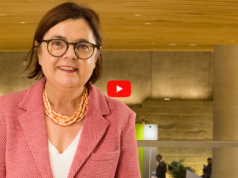
At this year’s Leipzig Interventional Course (LINC 2020; 28–31 January, Leipzig, Germany), William Gray (Main Line Health, Philadelphia, USA) considered the future of drug-coated devices and what to expect over the next five years. He suggests that while the current paclitaxel controversy—a result of the December 2018 Katsanos et al meta-analysis published in the Journal of the American Heart Association (JAHA)—has “opened a sirolimus door,” paclitaxel “will probably come back again” as a growing body of evidence begins to erase a mortality signal.
Speaking during the LINC session on latest insights into the safety and efficacy of drug-coated devices, Gray began by noting the “quite remarkable and effective” nature of paclitaxel devices. In patients who benefit from a reduction in repeat target lesion revascularisation (TLR), for example, he showed that about one in five patients in the In.Pact trials did not need to undergo another TLR procedure because of the presence of paclitaxel. “This is a pretty profound effect,” he commented.
In addition, Gray pointed out that antiproliferative therapies, including paclitaxel, have saved money. A 2016 meta-analysis from Katsanos et al, “a different meta-analysis,” Gray notes, showed that antiproliferative therapies have a “significantly marked effect” in cost of treatment for patients and for their outcomes. Furthermore, when devices using paclitaxel are compared, with Gray using the example of Eluvia versus Zilver, “the more effective the therapy, the more cost-effective it tends to be in the long term”.
Based on this information, and the “strength” of the available data, Gray explained that drug-eluting balloons and drug-eluting therapies were expected to grow over the next 10 years. However, he added that this growth in adoption peaked at around a 50% utilisation rate in the USA, before dropping by more than half, to just less than 25%, after the publication of the 2018 Katsanos et al meta-analysis. “There is some evidence that there is now an uptake in utilisation,” Gray added, but this is still “well below” the 50% peak and even further below the projected utilisation curve.
While his paclitaxel “speed bump” will be overcome, believes Gray, it has paved the way for the rise of an alternative drug—sirolimus. However, he noted that there are a number of challenges with this drug, including a relatively low tissue absorption in its natural state and comparatively short tissue retention times, both of which are “counterproductive” to effective treatment, Gray posited.
Sirolimus options
Gray then pointed out that, with the most effective paclitaxel devices, it is possible to measure tissue concentration of paclitaxel up to 180 days following a procedure. “Can we match that with sirolimus?” Gray questioned, adding that “everybody who has a paclitaxel device is looking at sirolimus as an alternative in case [paclitaxel] does not come back”.
Addressing specific options available in the sirolimus market, Gray began by outlining the key features of the Selution drug-coated balloon (MedAlliance), which received CE mark approval in February 2019 and US Food and Drug Administration (FDA) breakthrough device designation a year previous. Gray detailed that this particular drug-coated balloon (DCB) has microreservoir technology, which “allows for deposition and slower elution of the sirolimus over time,” adding that it also promotes adherence of the drug from the balloon into the tissue.
Gray referenced pre-clinical data which is supporting of this microreservoir concept, showing that the Selution tissue concentration is available out to 60 days. “This is no small feat with sirolmius analogues,” Gray commented.
Gray added that a first-in-man trial has already been conducted. At the 2019 Vascular and Interventional Advances conferences (VIVA; 4–7 November, Las Vegas, USA), Thomas Zeller (Universitäts-Herzzentrum, Bad Krozingen, Germany), revealed that the Selution DCB is safe and effective out to two years.
In addition to Selution, Gray noted that the Bullfrog micro-infusion device (Mercator MedSystems), a needle-based balloon, has the benefit of being able to accurately deliver “any compound you like” through a targeted injection. He detailed that there is now a dose-blinding trial using temsirolimus below the knee which showed improvements in overall patency and clinically-driven TLR (CD-TLR) using temsirolimus.
In terms of clinical data, the TANGO trial is a phase II, dose escalation, double-blinded trial comparing the delivery of temsirolimus to saline control in patients with severe claudication or critical limb ischaemia. This is the first US trial to investigate a sirolimus analogue to improve the durability of peripheral revascularisation procedures.
It was announced at VIVA 2019 that results of the TANGO low-dose cohort, compared to controls are positive out to 12 months, both for primary and secondary endpoints. To Ehrin Armstrong (UCHealth Heart and Vascular Center, Aurora, USA), who presented the results, perivascular temsirolimus is being developed as a “viable alternative” to prevent restenosis after below-the-knee (BTK) peripheral artery interventions, and TANGO high-dose data is “forthcoming”.
Return of paclitaxel “will take time”
Gray concluded: “The paclitaxel controversy has opened the door for alternative therapies.” However, he also acknowledged that an increasing number of paclitaxel safety studies are being published, and observed that “the more the data gets filled in, the less signal there is”. He suspects that as this data becomes more complete, “we are likely to see that signal go away”. Gray ended his presentation with the comment: “If so, paclitaxel will probably regain its pace of adoption, but it will take time.”













